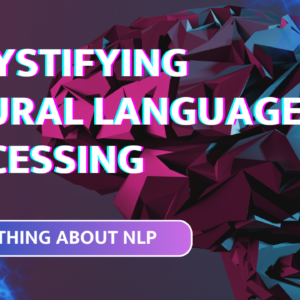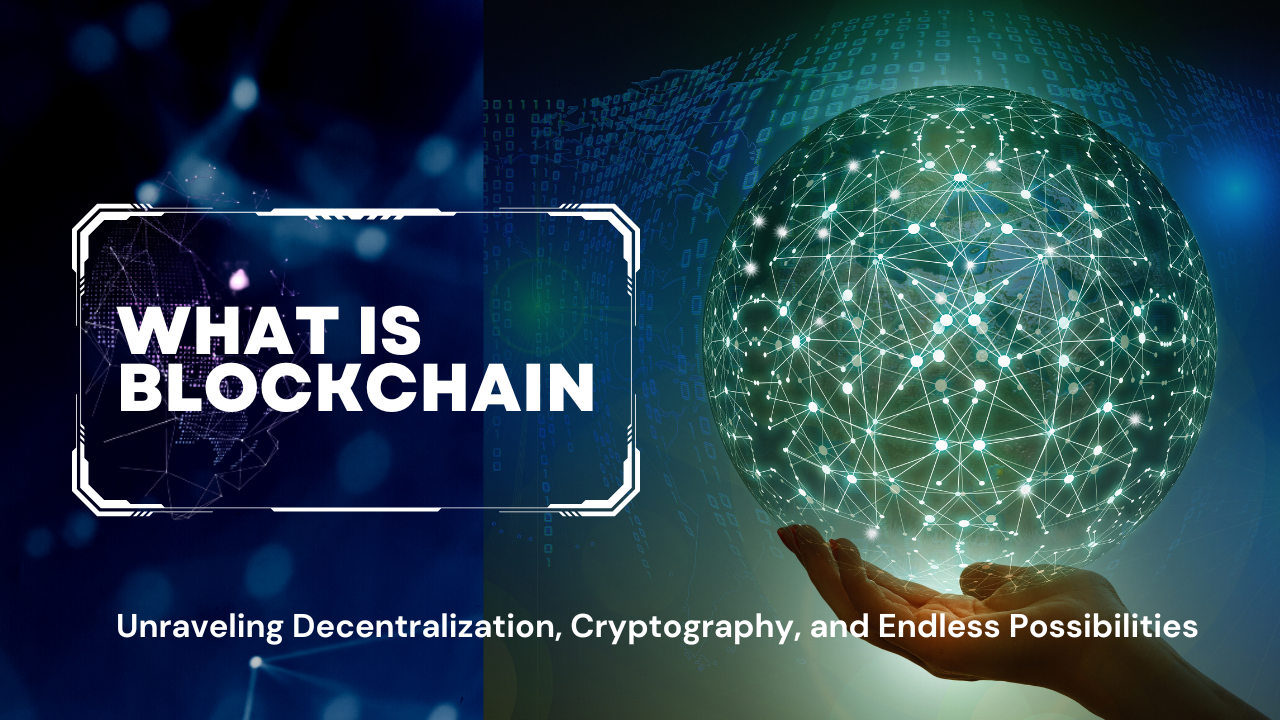Introduction
Table of Contents
- Introduction
- Understanding the Basics of Blockchain
- The Inner Workings of Blockchain Technology
- Applications of Blockchain Beyond Cryptocurrencies
- Exploring Future Possibilities
- Summary and Conclusion
- FAQ
In today’s rapidly evolving digital landscape, blockchain technology has emerged as a revolutionary force. Defined as a decentralized and transparent system, blockchain has garnered significant attention due to its potential to reshape industries and enhance security. Let’s delve into the significance of blockchain as well as the rise of this transformative technology.
Understanding the Basics of Blockchain

Exploring Decentralization
Centralized versus Decentralized Systems
- Centralized systems rely on a single central authority to control and manage data, leaving it vulnerable to manipulation and hacking.
- In contrast, decentralized systems distribute authority evenly across a network of participants, eliminating the need for intermediaries and enabling trust without a central governing body.
How Blockchain Achieves Decentralization?
- By utilizing a distributed ledger, blockchain ensures that each participant in the network has a copy of the entire transaction history, fostering transparency and trust.
- Through consensus mechanisms, participants collectively validate and agree on the authenticity of transactions, preventing fraud and manipulation.
Advantages of Decentralization in Blockchain
- Enhanced security: Decentralization makes it incredibly difficult for any single entity to alter data, providing a tamper-proof environment.
- Transparent governance: With decentralized systems, decision-making processes become more inclusive and transparent, empowering individuals.
The Building Blocks of Cryptography
Encryption and Decryption
- Encryption converts data into an unintelligible form, ensuring that only authorized parties can decipher it.
- Decryption reverses the encryption process, making the data readable again.
Hash Functions: Securing Blockchain Data
- Hash functions convert input data into a fixed-length string of characters, known as a hash.
- The immutability of hashes ensures data integrity within the blockchain, as even a minor change in input data generates a completely different hash.
Public and Private Key Cryptography
- Public key cryptography uses a pair of keys, one public and one private, to encrypt and decrypt data.
- Public keys are widely shared, allowing others to encrypt messages, while private keys remain confidential to the owner, enabling decryption.
Digital Signatures: A Trustworthy Verification
- Digital signatures are cryptographic techniques that validate the authenticity and integrity of digital documents.
- They provide a method for individuals to verify the source of a message and ensure that it hasn’t been tampered with during transmission.
The Inner Workings of Blockchain Technology
The Anatomy of a Block
Creation of Blocks
- Blocks are created through a process called mining, where participants compete to solve complex mathematical problems, which, once solved, validate and add a new block to the blockchain.
Structure of Blocks: Transaction Data, Nonces, and Timestamps
- Each block consists of transaction data, containing information about parties involved, amounts, and other relevant details.
- Nonces, arbitrary numbers, are included in blocks to ensure that the generated hash meets certain requirements, such as starting with a specific number of zeroes.
- Timestamps are appended to blocks, providing a chronological order to transactions and enabling efficient tracking.
Linking Blocks: Hash Pointers and the Blockchain Data Structure
- Hash pointers, references to the previous block’s hash, are utilized to link blocks together, forming the blockchain.
- This linking ensures the integrity of the entire chain, as modifying the data in one block would result in a change in hash and invalidate subsequent blocks.
Consensus Mechanisms: Ensuring Agreement
Proof of Work (PoW): The Original Consensus Mechanism
- PoW requires participants to prove their computational effort through solving mathematical problems, hence securing the blockchain.
- This mechanism, although effective, consumes significant energy and can be slow as more computational power is required as the network grows.
Proof of Stake (PoS): An Alternative Approach
- PoS assigns mining rights based on the participants’ ownership of cryptocurrency, showcasing their stake in the network.
- This energy-efficient approach reduces computational requirements and allows for faster transactions.
Delegated Proof of Stake (DPoS): Efficiency and Scalability
- DPoS introduces a voting mechanism, where stakeholders elect delegates to confirm transactions.
- This more centralized approach aims to increase transaction speed and scalability while maintaining a certain level of decentralization.
Byzantine Fault Tolerance (BFT): Overcoming Malicious Actors
- BFT consensus mechanisms enable networks to reach agreement even in the presence of malicious actors and potential failures.
- This fault-tolerant approach provides robust security against attacks and ensures the reliability of blockchain systems.
Understanding Blockchain Networks
Public, Private, and Consortium Blockchains
- Public blockchains are open to everyone, enabling anyone to participate in the network.
- Private blockchains, on the other hand, restrict access to selected participants, offering heightened privacy and control.
- Consortium blockchains function as a hybrid, where a group of organizations jointly govern the network, balancing security and openness.
Interoperability: Connecting Different Blockchains
- Interoperability allows different blockchains to communicate and share data seamlessly.
- This technology fosters the integration and collaboration of various blockchain networks, expanding their potential applications.
Smart Contracts: Executing Agreements on Blockchain
- Smart contracts are self-executing agreements that automatically fulfill predefined conditions when certain criteria are met.
- These contracts eliminate the need for intermediaries, enhancing efficiency and reducing costs.
Scalability and Performance Challenges
Scaling Issues in Blockchain
- As the number of transactions and participants increases, blockchain networks may face scalability issues, causing delays and congestion.
- The sheer size of the blockchain, with every participant storing a copy, also poses challenges to scalability.
Solutions and Innovations for Scalability
- Various approaches, such as sharding and layer 2 solutions, aim to address scalability challenges by dividing the workload and optimizing network efficiency.
- These innovations seek to increase the capacity and speed of blockchain networks while maintaining security and decentralization.
Balancing Security and Speed in Blockchain
- Achieving a balance between security and transaction speed is crucial in blockchain design.
- While higher transaction speeds may increase efficiency, they can also introduce vulnerabilities, requiring careful consideration.
Applications of Blockchain Beyond Cryptocurrencies
Transforming Industries with Blockchain
Supply Chain Management: Enhancing Transparency and Accountability
- Blockchain introduces transparency in supply chains, allowing stakeholders to trace products from origin to destination, reducing fraud and counterfeiting.
- Smart contracts enable automated and secure agreements between suppliers, manufacturers, and customers, streamlining the entire supply chain process.
Healthcare: Improving Data Security and Interoperability
- Blockchain enhances the security and privacy of sensitive healthcare data, preventing unauthorized access and tampering.
- Interoperability enables seamless and secure data exchange between healthcare providers, ensuring better patient outcomes and continuity of care.
Financial Services: Streamlining Transactions and Reducing Fraud
- Blockchain-powered financial services expedite transaction settlements, eliminating intermediaries and reducing costs.
- The transparency and immutability of blockchain data enhance trust, reducing the risk of fraud and providing a more secure ecosystem for financial activities.
Identity Management: Securing Digital Identities
- Blockchain offers a decentralized and tamper-proof solution for identity verification, protecting personal data from breaches and identity theft.
- Users can maintain control over their digital identity and securely share information when needed, empowering individuals while maintaining privacy.
Government Applications of Blockchain
Voting Systems: Enhancing Trust and Auditability
- Blockchain-based voting systems provide secure and transparent elections, ensuring tamper-proof results and increasing public trust.
- Auditable transaction history allows for comprehensive post-election analysis and verification.
Land Registration: Preventing Fraud and Disputes
- Blockchain enables secure and immutable land registries, reducing land-related disputes and fraud.
- By providing a transparent and easily accessible database, blockchain streamlines property transactions and simplifies title transfers.
Public Services: Ensuring Efficient and Transparent Delivery
- Blockchain facilitates efficient delivery of public services by eliminating manual processes and reducing bureaucracy.
- Transparent and auditable records enhance accountability, ensuring fair distribution of resources and reducing corruption.
Blockchain in the Internet of Things
Enabling Trust and Security in IoT Networks
- Blockchain secures data exchange between IoT devices, preventing unauthorized access and manipulation.
- By implementing decentralized consensus mechanisms, blockchain ensures the integrity and reliability of IoT networks.
Efficient Data Management and Sharing
- Blockchain allows IoT devices to securely share data, eliminating the need for intermediaries and enabling efficient data monetization.
- Smart contracts enable automated data transactions, ensuring fair compensation for data providers.
Exploring Future Possibilities
Blockchain in Artificial Intelligence
Enhancing AI Transparency and Accountability
- Blockchain provides a transparent and auditable framework for AI decision-making processes.
- By recording AI algorithms and data inputs on the blockchain, stakeholders can verify the integrity and fairness of AI systems.
Enabling Secure Data Sharing for AI Development
- Blockchain enables secure and decentralized data marketplaces, allowing AI developers to access diverse datasets without compromising individual privacy.
- Through smart contracts, data owners maintain control over their data and receive compensation for its usage.
Blockchain and Renewable Energy
Revolutionizing Energy Trading and Grid Management
- Blockchain facilitates peer-to-peer energy trading, democratizing the renewable energy market and incentivizing clean energy production.
- Distributed ledger technology enables efficient grid management, ensuring optimized energy distribution and reducing wasted resources.
Decentralized Finance (DeFi)
Disrupting Traditional Banking and Finance
- DeFi leverages blockchain to provide financial services without intermediaries, such as loans, insurance, and asset management.
- Through decentralized lending platforms and tokenization, individuals can access financial services traditionally limited to banks, increasing financial inclusion.
Summary and Conclusion
In this article, we have explored the fundamental concepts and inner workings of blockchain technology, including decentralization, cryptography, and consensus mechanisms. We have also delved into various applications of blockchain technology beyond cryptocurrencies, such as in supply chain management, healthcare, and government services. Furthermore, we have discussed the future possibilities of blockchain in areas like artificial intelligence, renewable energy, and decentralized finance. With its revolutionary potential and endless possibilities, blockchain technology promises to transform industries and reshape the digital landscape.
FAQ
- What is the difference between blockchain and distributed ledger technology? Blockchain is a specific type of distributed ledger technology (DLT) that utilizes cryptographic techniques and consensus mechanisms to build a secure and decentralized system. While all blockchains are DLTs, not all DLTs are blockchains. Other forms of DLT may have different structures and mechanisms.
- Is blockchain technology truly tamper-proof? While blockchain technology provides a high level of data integrity and security, it is not completely immune to tampering. Although highly improbable, a successful attack on the majority of participants in a blockchain network, known as a 51% attack, could potentially compromise the integrity of the blockchain.
- How does blockchain impact data privacy? Blockchain technology can enhance data privacy by allowing individuals to maintain control over their personal information. Through the use of cryptographic techniques and private keys, blockchain enables secure and transparent data transactions while protecting sensitive information from unauthorized access.
- What are some notable challenges to widespread blockchain adoption? Widespread blockchain adoption faces challenges such as scalability and performance limitations, regulatory uncertainties, and resistance to change in traditional industries. Additionally, concerns over energy consumption and the environmental impact of certain consensus mechanisms present obstacles that need to be addressed for broader adoption.
Follow us on our Instagram – @squarebox.in
Read more interesting articles and blog by clicking here.




